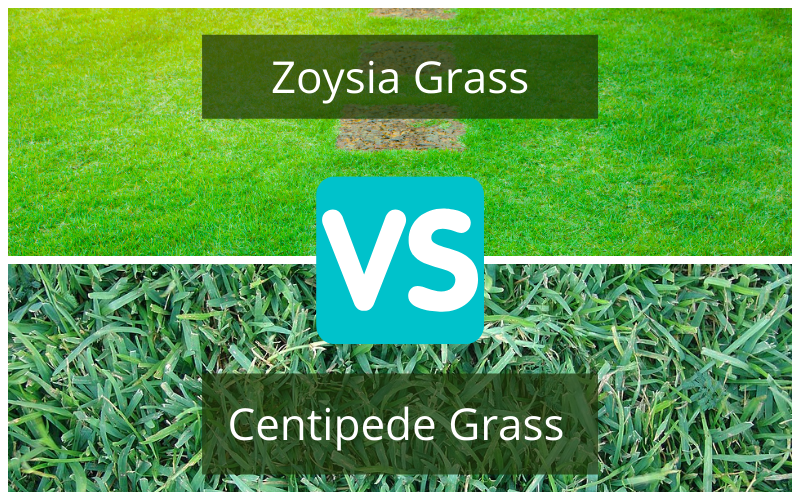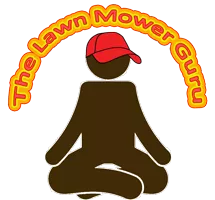Zoysia and centipede grass are two very different plants. One is durable and resource-intensive while the other is easily disturbed and requires few resources to thrive. One is quick to establish and the other takes years to get to a good place. Appearance, cost, and maintenance time and money required are also important factors to take into consideration when you’re weighing zoysia vs centipede for a new or established lawn.

Comparing Zoysia vs Centipede Grass
Overall, these are two warm-season grasses at near-complete opposite ends of the spectrum for all factors. You have zoysia grass which is high maintenance, durable, and has an attractive appearance and texture. It’s also expensive and can be time-consuming to maintain. Centipede grass, on the other hand, is rough in texture, lacks durability, and is easy to maintain. It’s also inexpensive and quick to establish itself compared to zoysia.
As different as zoysia grass is from centipede grass, it’s important to realize that neither is superior. Both grass types have a handful of advantages and disadvantages. Which you choose will depend on what you want out of your lawn and how you expect it to perform. Below you can see all of these differences dissected so you can make the best choice possible for your needs and situation.
Appearance
Zoysia grass, when warm and healthy, is a deep green color with a fine texture. The blades grow close together and provide a tough mat of sod once established. However, during the process or establishment, which can take up to 3 years, there may be thin or bare patches in the lawn that need to be protected and kept free of weeds.
Centipede grass, on the other hand, can establish itself in as little as one summer season or one year. It grows low to the ground and has a wide spread, with each clump sending out stolons or above-ground roots to produce even more clumps of grass. The blades themselves are bright green with a somewhat rough texture. Though the grass clumps and stolons will knot closely together to produce a thick mat of lawn, the growth habit of the centipede grass may give it the impression of being “thinner” than zoysia grass.
Best Uses for Zoysia Grass vs Centipede Grass
Zoysia grass needs to be contained, it needs regular watering, and it needs to be mown at least once a week during its growing season. Zoysia is used for the fairways and teeing areas of some golf courses in very hot regions. For lawns, it can take a fair amount of traffic and is difficult to dig through once it has been established. Strong barriers should be placed around zoysia lawns to prevent it from invading spaces outside of the lawn.
Centipede grass is best for low-traffic lawns that don’t get a lot of water or other resources. This is the type of lawn that doesn’t need much attention and that will grow slowly, requiring less mowing than other warm-season grass lawns.
Soil Types and pH Needs of Zoysia Grass and Centipede Grass
Zoysia requires well-drained but moist soil. It doesn’t need rich soil, but providing this can improve the color of the zoysiagrass. A slightly acidic pH of 6 to 6.5 is ideal but a neutral pH is acceptable.
Centipede grass also likes acidic soil with an ideal pH range of 5 to 6. It does not, however, need moist or rich soil. Like all stolon-based grass varieties, centipede grass prefers sandy soil and cannot work through heavy clay-based soils. Centipede grass also thrives in dry regions and requires little moisture to survive and continue to grow.
Water Needs for Zoysia Grass vs Centipede Grass
Zoysia prefers a moist environment. To avoid damage and sunburn, zoysia grass needs at least 1” of water each week or about 20 minutes, on average, of time under the sprinkler. In the hottest weather, temperatures above 95F and in low-humidity conditions, this can be increased to 2” to account for faster evaporation.
Centipede grass requires as little as .5” of water each week but will do well with the standard 1” in any temperature range. Many centipede grass lawns can survive all but the peak of summer with no damage and no added water.
Sun, Shade, and Temperature Requirements for Zoysia Grass and Centipede Grass
Zoysia and centipede grass both prefer full sun and will not tolerate much shade. Both of these grass varieties also thrive in hot weather and will not go dormant at high temperatures unless they completely run out of water and nutrients over a long period.
As for cold temperatures, zoysiagrass will go dormant as temperatures approach 55F and below. Zoysia cannot survive a hard frost and will take damage if temperatures are below 40F for long. Centipede grass does not have a set dormancy period. It can survive a period of cold below freezing, but it will begin to die back very quickly.
Durability of Zoysia Grass or Centipede Grass Lawns
Zoysia is a fairly durable grass type once it has been established. While establishing, it is important to protect the plugs or starts from weeds, pests, and animals. Centipede grass has low durability, but it is quick to grow or regrow. It also thrives in low water and low nutrient conditions.
Common Pests and Diseases for Zoysia Grass Lawns and Centipede Grass Lawns
Zoysia and centipede grass are both affected by fungus and mildew, however, zoysia is much more likely to be affected by these conditions due to its quick buildup of thatch. Insects such as beetles, grubs, and thrips affect each of these species about the same.
Centipede grass, however, is much more likely to be crowded out by weeds where zoysia grass would do the crowding. Digging animals are much more likely to cause damage to centipede grass, though it would fill in quickly. Once established, zoysia grass is difficult to dig through or dig under.
Mowing Needs of Zoysia Grass vs Centipede Grass Lawns
Zoysia needs to be mowed very frequently. If fed and watered well during the hottest part of summer, this could mean more than one mowing session per week. Further, due to this fast growth and frequent mowing, zoysia lawns will need to have the accumulated thatch removed more frequently than nearly any other common lawn grass type.
Centipede grass is often mown once a week, though in hot weather it can slow its growth and only need mowing every other week. Like zoysia, centipede grass is often mown down to 1” though this height is increased to 1.5” or even 2” to help the grass retain moisture in hot weather.
Types of Grass Related to Zoysia Grass
‘Zoysia japonica’ is the variety referred to most often as zoysiagrass or, simply, zoysia. This is the variety being compared in this article. The other close zoysia relatives are ‘Zoysia matrella’ and ‘Zoysia tenufolia’. Both of these do not make ideal grass types outside of more tropical climates as they require high year-round temperatures, lots of moisture, and are not at all cold tolerant.
Types of Grass Related to Centipede Grass
With few close relatives and none comparable to the centipede grass used for lawns, centipede grass strains are something to pay attention to. The right strain in the right region planted next to a more “commonplace” strain can have a completely different look and texture.
Zoysia vs Centipede Cost
Zoysia grass vs centipede grass, boiled down to cost, leaves centipede grass as the cheaper lawn option for both planting and maintenance. Zoysia grass needs to be planted in plug form and cannot be propagated via seeds as this variety produces few seeds and most of them are not viable.
Centipede grass can easily be propagated from seed and produces many seeds of its own once it has been established. Centipede grass also requires much less water, fertilizer, and time spent mowing- all things that cost money.
The Best-Case-Scenario for a Zoysia Grass or Centipede Grass Lawn
If you have strong barriers around your lawn and other landscaping, zoysiagrass could be what you’re looking for. It has one of the most attractive appearances of any lawn grass variety and it is incredibly difficult to disturb once it is established. However, you must be willing to put in the work and resources to maintain a zoysia lawn.
A centipede grass lawn may not be as impressive at first glance, but it’s resource smart. If you want a low-maintenance lawn but that can still hold up to the heat, centipede grass is a great choice.
An Overview of Zoysia Grass vs Centipede Grass
There’s a lot to think about if you’re considering whether Zoysia Grass or Centipede Grass would be the better choice for your lawn. To make things easy, we’ve put together the table below so you can quickly compare the key points.
| Grass Type | Zoysia Grass | Centipede Grass |
|---|---|---|
| Appearance | Deep Green with Smooth, Fine Blades | Bright, Light Green with Short, Straight Blades Growing From Long Stolons |
| Popular Uses | Lawns Where It Can Be Well Contained – Fairways and Teeing Areas for Golf Courses | Warm Climate Lawns with Low Traffic and Few Resources |
| Ideal Soil Type and pH | Well-Drained, Moist Soil is Ideal – 6 to 6.5 Ideal pH | Sandy and Dry Soil is Ideal - 5 to 6 Ideal pH |
| Water Requirements | 1” of Water Per Week – Average Overall Water Consumption | .5 to 1” of Water Per Week – Low to Average Overall Water Consumption |
| Sun/Shade/Temperature Needs | Full Sun Necessary - Dormant at 55F | Full Sun Preferred/No True Dormant Period |
| Durability | Excellent Durability and Damage Recovery Once Established | Low Durability and Damage Recovery |
| Pests and Diseases | Fungus, Mildew, and Mold (Often Exacerbated by Thatch) – Beetles, Thrips, Grubs, Webworms | Mold, Mildew, Moss, and Algae if Too Moist – Webworms, Thrips, Grubs – Digging Animals – Weeds and Other Plants |
| Mowing Needs | Should Be Mown to 1” Height – Dethatch Frequently (as often as 4x per year) | Should Be Mown to 1” to 1.5” Height – Grows Best in Hot Weather |


Leave a Reply